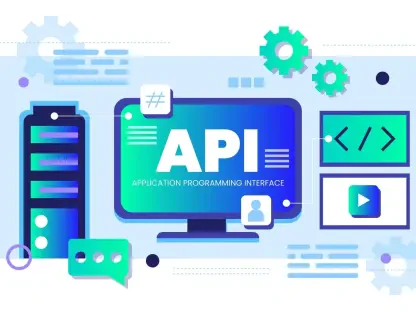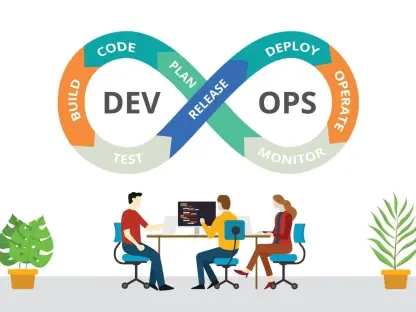Understanding DevSecOps: A Modern Necessity in Software Development
In today’s fast-paced digital landscape, software development teams are under immense pressure to deliver innovative solutions at unprecedented speeds, often at the expense of robust security measures, while cyber threats continue to escalate. With a staggering increase in data breaches reported globally, organizations face a critical dilemmhow to maintain rapid delivery without compromising on protection. This challenge has propelled DevSecOps into the spotlight as a transformative methodology that integrates security practices directly into development and operations workflows, ensuring that vulnerabilities are addressed without slowing down progress.
DevSecOps emerges as a response to the evolving needs of the software industry, where Continuous Integration and Continuous Delivery (CI/CD) pipelines have become the backbone of agile delivery. The current state of the sector reveals a dual focus: accelerating time-to-market while grappling with the rising sophistication of cyberattacks. Major players in the DevSecOps ecosystem, such as tool providers like SonarQube and Snyk, are shaping the landscape by offering solutions that embed security checks into automated workflows, catering to diverse industry segments from fintech to healthcare.
The significance of this approach lies in its ability to bridge the longstanding gap between speed and vulnerability prevention. By fostering collaboration across development, security, and operations teams, DevSecOps ensures that security is not an afterthought but a fundamental component of the software lifecycle. This methodology empowers organizations to deliver reliable products swiftly, maintaining a competitive edge in a market where delays or breaches can result in substantial losses.
Core Principles of DevSecOps for Speed and Security Harmony
Key Strategies and Emerging Practices
At the heart of DevSecOps lies the principle of “shifting security left,” which advocates for embedding security checks early in the development process. This strategy minimizes the risk of costly late-stage fixes by identifying vulnerabilities during coding or initial testing phases. Tools like static code analysis and container security scans are increasingly integrated into developer environments, ensuring that potential issues are flagged in real time without disrupting workflow velocity.
Automation stands as another cornerstone, eliminating the inefficiencies of manual security reviews that often bottleneck rapid development. Emerging technologies, such as automated dependency management and cloud security scans, play a pivotal role in maintaining pace while safeguarding applications. These tools reduce human error and allow teams to focus on innovation rather than repetitive tasks, striking a balance between efficiency and protection.
Additionally, evolving developer behaviors are shaping the DevSecOps paradigm, with a growing emphasis on treating security as an integral part of code quality. Opportunities for collaboration are expanding as cross-functional teams work together to define security standards and share best practices. This cultural shift, supported by intuitive tools, ensures that security becomes a shared responsibility, fostering an environment where rapid delivery and robust defense coexist seamlessly.
Industry Adoption and Growth Insights
Adoption of DevSecOps practices is gaining momentum across various sectors, with industries like finance and e-commerce leading the charge due to stringent regulatory demands and high-stakes data environments. Recent surveys indicate that a significant percentage of enterprises have integrated security into their CI/CD pipelines, reflecting a broader acceptance of this methodology. This trend underscores a collective recognition of the need to prioritize security without sacrificing development speed.
Market projections for DevSecOps tools suggest robust growth over the coming years, with estimates pointing to substantial expansion from this year to 2027. Performance metrics, such as vulnerability remediation times, are improving as organizations adopt automated workflows and risk prioritization frameworks. These advancements signal a maturing market where tools and practices are becoming more refined, catering to the nuanced needs of modern software teams.
Looking ahead, the widespread adoption of DevSecOps is poised to redefine software delivery by embedding security as a core driver of innovation. As more organizations embrace this approach, the industry is likely to witness shorter development cycles paired with enhanced protection mechanisms. This trajectory highlights the transformative potential of DevSecOps in shaping a future where speed and security are no longer at odds but are instead complementary forces.
Challenges in Implementing DevSecOps Effectively
Implementing DevSecOps is not without hurdles, as many organizations encounter resistance to cultural change within their teams. Developers and operations staff accustomed to traditional workflows may view security integration as an additional burden, slowing down adoption. Overcoming this mindset requires persistent efforts to demonstrate the value of security as an enabler rather than a barrier to progress.
Technical challenges further complicate the landscape, particularly when integrating diverse security tools into existing CI/CD pipelines. Disparate systems and lack of interoperability can create friction, disrupting the seamless flow of development processes. Additionally, organizational silos—where development, security, and operations teams operate in isolation—hinder effective collaboration, often leading to misaligned priorities and delayed responses to vulnerabilities.
Solutions to these obstacles lie in strategic initiatives such as comprehensive developer training programs to build security awareness and skills. Appointing security champions within teams can facilitate knowledge sharing and drive cultural alignment. Moreover, adopting automated workflows minimizes disruptions by streamlining security checks, ensuring that technical and organizational barriers are addressed holistically to support DevSecOps implementation.
Navigating the Regulatory and Compliance Landscape in DevSecOps
The regulatory framework surrounding software development significantly impacts DevSecOps practices, with data protection laws like GDPR setting stringent requirements for safeguarding user information. Industry standards, such as those outlined by OWASP, further guide organizations in establishing secure coding practices. Compliance with these mandates is not optional but a critical component that shapes how security is integrated into development lifecycles.
Compliance requirements influence DevSecOps workflows by dictating specific security measures, such as encryption protocols and audit trails, that must be embedded into processes. These obligations often drive the selection of tools capable of generating compliance reports or enforcing policy adherence automatically. As a result, organizations must align their DevSecOps strategies with legal and industry benchmarks to avoid penalties and maintain trust with stakeholders.
Beyond mere adherence, regulatory landscapes push teams to prioritize risks based on potential legal and reputational impacts. This alignment ensures that security practices are not only reactive but proactive, addressing vulnerabilities before they become exploitable. By weaving compliance into the fabric of DevSecOps, organizations can turn mandatory requirements into opportunities for building more resilient software systems.
The Future of DevSecOps: Trends and Innovations on the Horizon
Emerging technologies are set to redefine the DevSecOps landscape, with AI-driven threat detection offering predictive insights into potential vulnerabilities before they manifest. Advanced runtime monitoring tools are also gaining traction, providing real-time visibility into application behavior across complex environments. These innovations promise to enhance security without imposing additional overhead on development timelines.
Potential disruptors, such as evolving cyber threats and shifting consumer expectations for secure software, will continue to challenge the status quo. As attackers employ more sophisticated techniques, DevSecOps must adapt by incorporating dynamic defense mechanisms. Simultaneously, end-users demand transparency and assurance, pushing organizations to prioritize security as a visible feature of their offerings.
Growth areas like cross-team collaboration tools are expected to flourish, breaking down silos and enabling seamless integration of security practices. Global economic factors, including budget constraints and investment in digital transformation, will also influence adoption rates. Through continuous innovation, DevSecOps stands to make security an invisible yet indispensable part of high-speed development, ensuring that protection keeps pace with progress.
Conclusion: Transforming Security into a Competitive Advantage
Reflecting on the insights gathered, it becomes evident that DevSecOps has successfully balanced speed and security through a blend of technical advancements, cultural shifts, and strategic foresight. The methodology proves instrumental in aligning rapid delivery with robust protection, as automation and early intervention minimize vulnerabilities without stalling innovation. This integration reshapes how organizations approach software development, turning potential weaknesses into strengths.
Moving forward, actionable steps emerge as critical for sustaining this balance. Organizations are encouraged to invest in upskilling their workforce, ensuring that every team member understands security’s role in enhancing product quality. Prioritizing scalable tools that adapt to evolving threats also stands out as a necessity, alongside fostering environments where collaboration thrives. These measures promise to solidify DevSecOps as a foundation for resilience.
Lastly, the journey ahead points toward leveraging DevSecOps not just for compliance or defense, but as a strategic asset. By embedding security into the core of development processes, companies position themselves to innovate confidently in competitive markets. This perspective shifts the narrative, highlighting how a commitment to secure practices can unlock new opportunities and drive long-term growth.









